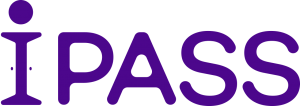
Overcoming Common Challenges in Digital Onboarding
While digital onboarding offers numerous benefits to businesses and users alike, it also comes with its share of challenges. This blog will discuss some of the most common challenges faced in digital onboarding and provide solutions to overcome them, ensuring a seamless and efficient process for all parties involved.
Ensuring Data Security and Privacy
One of the primary concerns in digital onboarding is the protection of sensitive user data. To address this issue, businesses should:
Implement robust security measures, such as encryption, secure sockets layer (SSL) certificates, and multi-factor authentication.
Regularly update software and security protocols to safeguard against emerging threats.
Train employees on data privacy best practices and establish a clear data handling policy.
Ensure compliance with relevant data protection regulations, such as the GDPR and CCPA.
Simplifying the User Experience
A complicated or cumbersome onboarding process can frustrate users and result in abandonment. To improve the user experience, businesses should:
Design an intuitive and user-friendly interface, minimizing the number of steps required to complete the process.
Provide clear instructions and support, such as tooltips, FAQs, or live chat assistance.
Test the onboarding process across various devices and platforms to ensure a consistent and responsive experience.
Use automation and AI to streamline tasks and reduce the need for manual input.
Personalizing the Onboarding Process
A one-size-fits-all approach to digital onboarding may not resonate with all users. To provide a personalized experience, businesses should:
Leverage data-driven insights and analytics to tailor content, product recommendations, and support for each user.
Offer customizable settings and preferences, allowing users to tailor the experience to their needs.
Segment users based on factors such as demographics, behavior, and preferences to deliver targeted messaging and content.
Maintaining Compliance with Regulations
Complying with industry-specific regulations and standards can be a challenge in the digital onboarding process. To maintain compliance, businesses should:
Regularly update internal policies and procedures to align with evolving regulations.
Train employees on regulatory requirements and establish a culture of compliance.
Consult with legal experts or compliance professionals to ensure adherence to applicable standards.
Implement automated compliance checks and monitoring to identify and address potential issues.
Measuring and Optimizing the Onboarding Process
Continuously improving the digital onboarding process is essential for long-term success. To measure and optimize the process, businesses should:
Establish key performance indicators (KPIs) to track the success of the onboarding process, such as completion rates, time-to-completion, and user satisfaction.
Gather user feedback through surveys, interviews, or in-app prompts to identify areas for improvement.
Use A/B testing to experiment with different onboarding approaches and identify the most effective strategies.
Regularly review and update the onboarding process to ensure it remains relevant, engaging, and effective.
Conclusion
By addressing common challenges in digital onboarding, businesses can create a smooth and efficient process that benefits both the organization and its users. By prioritizing data security, simplifying the user experience, personalizing the process, maintaining regulatory compliance, and continuously optimizing the onboarding journey, businesses can reap the rewards of a successful digital onboarding strategy in today’s competitive landscape.
